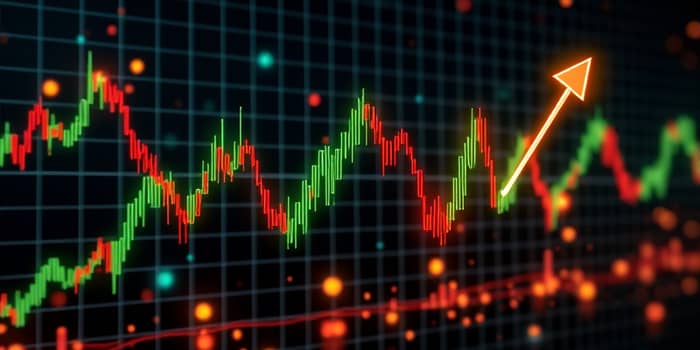
Moving averages are essential tools in technical analysis, helping traders and analysts make sense of volatile market data. By smooth out price fluctuations, these averages deliver clearer signals and reduce the impact of random price swings.
Whether you are an experienced investor or just starting out, understanding moving averages can equip you with a reliable framework to identify and follow market trends.
At their core, moving averages calculate the average price of an asset over a specified period. This transforms erratic price data into a more interpretable line, revealing the underlying direction of the market. Traders rely on these tools to discern whether a market is trending upward, downward, or moving sideways.
Two main varieties dominate the landscape: the Simple Moving Average and the Exponential Moving Average.
Moving averages serve several critical functions in trading:
Trend Identification: By observing the slope and direction of a moving average, traders can determine whether an asset is in an uptrend, downtrend, or consolidation phase.
Support and Resistance: In a trending market, moving averages often act as dynamic support and resistance levels, where prices pause or reverse.
Crossovers: When a short-term moving average crosses above a long-term moving average, it can trigger buy signals; the reverse crossover may signal a sell opportunity.
Strategic use of moving averages can enhance trade decision-making:
The 50-day and 200-day moving averages are widely followed benchmarks. The 50-day MA captures short-term and long-term trends, while the 200-day MA offers a broad view of market health.
When prices trade above the 200-day MA, markets are often deemed bullish; trading below it suggests bearish sentiment. Additionally, moving averages help identify mean reversion opportunities—moments when prices revert to their average levels after extended deviations.
Moving averages play a vital role in various financial contexts, from stocks to forex and indices. Traders use them to pinpoint entry and exit points for trades and to build systematic strategies.
For example, the S&P 500’s relationship with its 200-day MA is closely monitored: sustained trading above this line typically signals continued strength, while breaches below may warn of downturns. In currency markets, pairs like EUR/USD often exhibit clear signals when short-term EMAs cross long-term SMAs during high-volatility sessions.
Understanding the formulas deepens appreciation for each method:
SMA Formula: (Sum of closing prices over n periods) ÷ n
EMA Formula: (Current Price × k) + (Previous EMA × (1 − k)), where k = 2 ÷ (n + 1)
Charts vividly illustrate how moving averages interact with price action. Overlaying SMAs and EMAs on candlestick or line charts highlights crossovers, trend strength, and potential reversal points. Visual tools also allow traders to adjust periods and observe real-time market responses, improving execution in dynamic environments.
Moving averages offer a clear, actionable framework for analyzing market trends. By smoothing volatility and generating precise signals, they empower traders to make informed decisions.
Whether used alone or combined with other indicators, moving averages remain at the heart of trend-following systems and continue to unlock market insights for professionals and novices alike.
References













